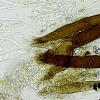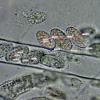
26-06-2017 08:19
 Christopher Engelhardt
Christopher Engelhardt
N Germany, in a forest on bare soil, 25/06/2017.Ha

26-06-2017 08:25
 Christopher Engelhardt
Christopher Engelhardt
N Germany, in a forest, on wood, 25/06/2017.Hairs

23-06-2017 21:51
 Rubén Martínez-Gil
Rubén Martínez-Gil
Hola a todos. Subo unas fotos de unas Anthracobia

24-06-2017 23:53
A group of four or five Scutellinia were on the mu

23-06-2017 23:41
 Bernard CLESSE
Bernard CLESSE
Bonsoir à tous,Sur branche pourrie, dans une soui

21-06-2017 17:31
Thorben HülsewigHi there,i found few days ago this Arthrinium sp.

23-06-2017 01:05
Valencia Lopez Francisco JavierHola a todosOs adjunto unas fotos de unos ascomice

22-06-2017 18:45
 Viktorie Halasu
Viktorie Halasu
Hello, there's another Mollisia from the same str
Scutellinia cejpii ?
Christopher Engelhardt,
26-06-2017 08:19
 N Germany, in a forest on bare soil, 25/06/2017.
N Germany, in a forest on bare soil, 25/06/2017.Hairs 175-350 x 14-22 µ, bifurcate, septate.
Asci around 250 µ.
Paraphyses unbranched, 3 µdiam., in the head swelling to around 8 µ.
Spores 23x13 µ, warty.
See pics.
Scutellinia cejpii ?
Thanks & regards Chris
Malcolm Greaves,
26-06-2017 10:08
Re : Scutellinia cejpii ?
Hello Chris
There are only three candidates with these narrowly ellipsoid spores. Your spore sizes look a best fit for S cejpii. Were the figures quoted an average or just based on an odd spore and was it from a spore drop or a squash as the spores can vary quite a bit after a natural release from the ascii .
Some of the hairs however are normally broad (up to 50) with a multifurcate root. Can you check and see if there are any fitting this description.
The other thing to check for is if the outer wall of the spore is released in heated LCB.
Mal
There are only three candidates with these narrowly ellipsoid spores. Your spore sizes look a best fit for S cejpii. Were the figures quoted an average or just based on an odd spore and was it from a spore drop or a squash as the spores can vary quite a bit after a natural release from the ascii .
Some of the hairs however are normally broad (up to 50) with a multifurcate root. Can you check and see if there are any fitting this description.
The other thing to check for is if the outer wall of the spore is released in heated LCB.
Mal
René Dougoud,
26-06-2017 12:01
Re : Scutellinia cejpii ?
Cher Collègue,
Il y aurait des choses à dire sur la façon dont vous présenter l'espèce. Certaines ont été dites dans le message de Malcolm. Voir aussi le contenu de mon message de ce jour, pour la proposition de S. scutellata.
Ceci dit, les ascospores de S cejpii, ne sont pas toutes régulièrements ellipoïdales, elles sont un peu excentrées. Ceci est un caractère typique de l'espèce. Il faut le contrôler sur sporée, dans le bleu coton. La photo de l'ascospore que vous montrez est excentrée, mais sur une unique ascospore il n'est pas possible de ce prononcer en faveur de S. cejpii.
Cordialement
René
Il y aurait des choses à dire sur la façon dont vous présenter l'espèce. Certaines ont été dites dans le message de Malcolm. Voir aussi le contenu de mon message de ce jour, pour la proposition de S. scutellata.
Ceci dit, les ascospores de S cejpii, ne sont pas toutes régulièrements ellipoïdales, elles sont un peu excentrées. Ceci est un caractère typique de l'espèce. Il faut le contrôler sur sporée, dans le bleu coton. La photo de l'ascospore que vous montrez est excentrée, mais sur une unique ascospore il n'est pas possible de ce prononcer en faveur de S. cejpii.
Cordialement
René
Christopher Engelhardt,
26-06-2017 21:43
Malcolm Greaves,
27-06-2017 00:26
Re : Scutellinia cejpii ?
With that new information I would happily go with S cejpii.
Mal
Mal



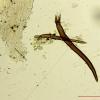

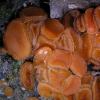
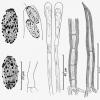
 Scutellinia-cejpii-M-1-0001.jpg
Scutellinia-cejpii-M-1-0001.jpg